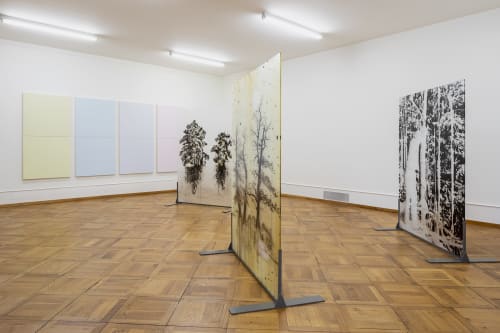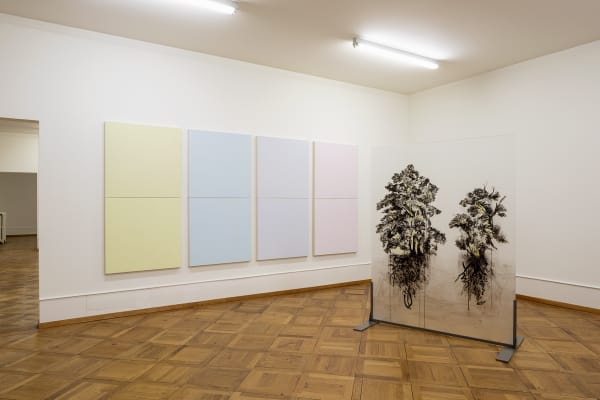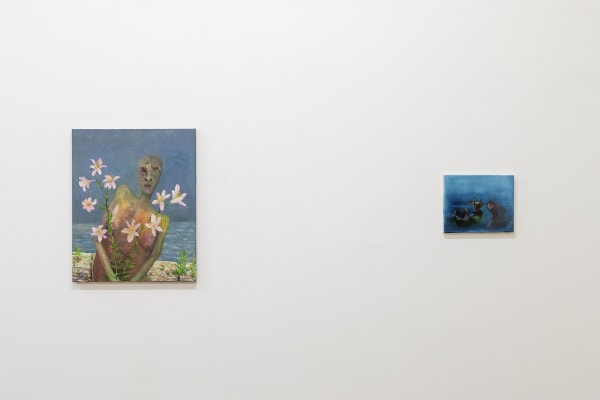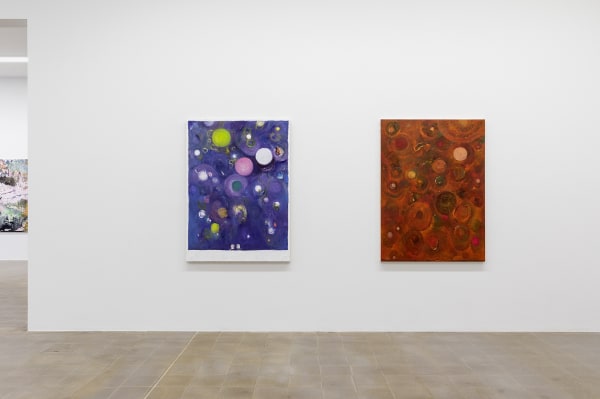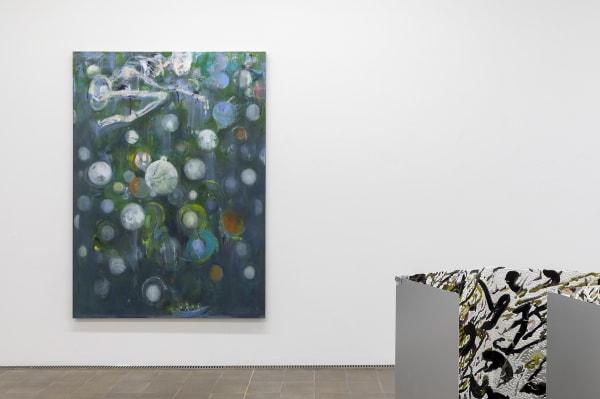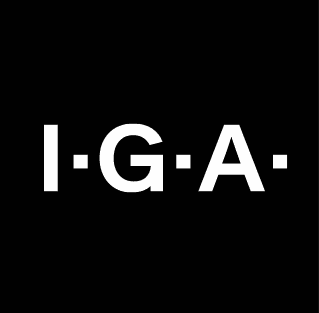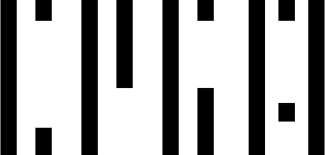No other artistic medium has experienced so many positive as well as negative attributions as painting. No longer a dominant art form, it has nonetheless remained a key reference for non-painting practices and has itself expanded to embrace approaches that used to be associated with other media, such as Conceptual art, institutional critique or performance art. Painting is continually being re-interpreted and is currently enjoying a revival. It is timely, therefore, that this exhibition at Kunsthaus Pasquart, an institution that has continuously presented painting during the last ten years, should now focus on the current status of the medium in Switzerland.
The exhibition (Un)certain Ground is not an overview of Swiss painting, but focuses rather on painters in or from Switzerland whose work is right now negotiating (new) territory. The selection made by the three curators of the exhibition – Madeleine Amsler, Clare Goodwin and Felicity Lunn – takes into account different generations and geographical locations; it considers artists who are influential, but also others developing interesting work less visibly. Above all, the exhibition underlines the ways in which a delight with experimentation and the relationship between the figurative and the abstract, as well as a breadth of ideas and forms of expression are currently being practised through painting in Switzerland.
The re-interpretation of art historical sources informs the practices of several of the participating artists. These include the inspiration Valérie Favre draws from early 20th century painters, Ralph Bürgin’s and Klodin Erb’s interest in classical themes and Markus Weggenmann’s references to Hard Edge painting. Traditional artistic genres are infused with contemporary meaning in Caroline Bachmann’s landscapes, Francisco Sierra’s and Hans Stalder’s still lifes and Caro Niederer’s interiors. Other visual languages are also significant sources of inspiration: popular culture and comics for Mitchell Anderson and Sereina Steinemann, graphic design and social media for Louisa Gagliardi, advertising for Andreas Hochuli and science fiction films and video games for Natacha Donzé.
Painting is seen in the exhibition to be porous to a huge range of influences. These include other artistic media: photography in the case of Caro Niederer and Uwe Wittwer, sculpture for Ralph Bürgin and installation in the work of Elza Sile. Scientific and historical research informs the work of Barbara Ellmerer and Uwe Wittwer respectively, Valérie Favre draws on literature and philosophy and Rachel Lumsden condenses contemporary events into pictorial motifs, while Miriam Cahn and Yoan Mudry comment critically on socio-political questions. The everyday is interwoven into the art of Caro Niederer, Hans Stalder, Sereina Steinemann and Jean-Luc Manz; in their self-reflexive approach, Mitchell Anderson explores the meanings we invest in images and objects and Renée Levi and Christine Streuli quote their own visual archives. Both Andreas Hochuli and Yoan Mudry integrate words and fragments of text in their images as a means to open up associative spaces. The medium that is traditionally most closely connected to the expression of emotion, painting communicates forms of spirituality in the work of Andreas Dobler and Giacomo Santiago Rogado. Francisco Sierra’s paintings are surreally witty and both Miriam Cahn and Andriu Deplazes explore the fragmentation of identity.
(Un)certain Ground encompasses both figurative and abstract painting, though many of the participating artists, including Markus Weggenmann, Barbara Ellmerer and Daniel Karrer, are concerned with blurring the distinction. The reduced, clear formal language of Caroline Bachmann, Charlotte Herzig and Inka ter Haar contrasts markedly with the dissolution of Miriam Cahn’s figures or the fleeting quality of paint in Luisanna Gonzalez Quattrini’s delicate compositions. There are also many different approaches to abstraction, from Jean-Luc Manz’ reduced monochrome structures and the site-specific installations of Sylvain Croci-Torti and Philippe Decrauzat, via pattern and ornament in the work of Christine Streuli and Renée Levi to Giacomo Santiago Rogodo and Natacha Donzé’s fluid combinations of geometric and amorphous forms.
The fundamental questions that have preoccupied painting for centuries are investigated in highly contemporary ways: the relationship of figure and ground, flatness and depth in the paintings of Louisa Gagliardi and Inka ter Haar, and the symbolic potential of colour in Mitchell Anderson’s work. Paint is not only colour, but also physical material in the gestural, expressive paintings of Rachel Lumsden, Valérie Favre and Klodin Erb. Although the exhibition focuses primarily on the traditional format of painted canvases hung on the wall, it includes a small number of works made on other supports: wall paintings by Charlotte Herzig, paintings on glass by Uwe Wittwer and Daniel Karrer, as well as Elza Sile’s sculptural paintings on aluminium.
Curators: Madeleine Amsler, Clare Goodwin and Felicity Lunn
Christine Streuli, exhibition views, mixed media.
